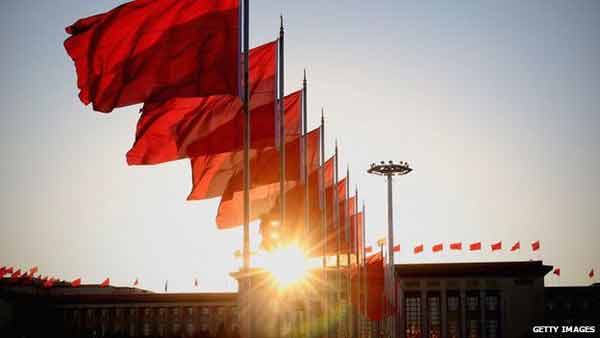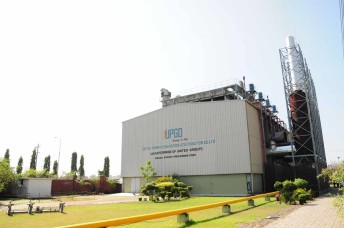London, UK (BBN)-London’s FTSE 100 index has recorded its biggest weekly loss this year after poor manufacturing figures in China exacerbated global economic fears.
The FTSE has fallen 5.2 per cent, or 363 points, since Monday, reports BBC.
On Friday the index closed 2.8 per cent lower, while markets in Paris and Frankfurt saw falls of about 3 per cent.
Shares also plunged on Wall Street, with the Dow Jones, Nasdaq and S&P 500 indexes all down more than 3 per cent by the close.
Only one company on the FTSE 100 saw gains on Friday – Royal Mail, which rose by 1.6 per cent.
The FTSE 100 has fallen for nine sessions in a row, its longest losing streak since 2011. It is almost 13 per cent below an all-time high hit in April.
In the US, the S&P 500 suffered its biggest daily percentage drop in nearly four years on Friday, losing 64.8 points, or 3.19 per cent, to 1,970.89.
The Dow Jones industrial average fell 3.12 per cent, and the Nasdaq dropped 3.52 per cent.
As well as global stock markets, US oil prices also dived on Friday, with New York crude dipping below $40 a barrel for the first time since the financial crisis and marking its longest weekly losing streak since 1986.
Earlier, data from China indicated factory output in August shrank at its fastest pace in more than six years.
The private Caixin/Markit manufacturing purchasing managers’ index (PMI) dropped to 47.1 from 47.8 in July.
A figure below 50 indicates contraction.
The data triggered another sell-off in Chinese shares, which ended the day down more than 4 per cent.
The decline comes on the heels of weaker-than-expected economic data in July, plus this month’s yuan devaluation and a stock market plunge.
Investors are growing increasingly concerned, as the Shanghai Composite index is now down 12 per cent this week.
SLOW DOWN
Friday’s factory output reading for China was the lowest since March 2009, during the depths of the global financial crisis, and the sixth consecutive below the 50-point level.
The Caixin flash PMI is the earliest economic measure of the Chinese economy to be released each month and is closely watched for clues on how growth is faring.
Earlier in August, China’s official economic growth data showed a further slowdown in the past quarter, expanding 7 per cent compared with a year earlier, its slowest pace since 2009.
In 2014, China’s economy grew at its slowest pace since 1990. It expanded by 7.4 per cent, missing its annual growth target of 7.5 per cent for the first time in 15 years.
Since June this year, stock exchanges on the mainland have seen extreme volatility, undermining investor confidence and leading to government intervention.
CATCHING A COLD?
Nicholas Teo, market analyst with CMC markets, warned that China’s slumping economy could dash hopes for a global recovery.
“China today is no longer just the ‘factory’ of the world. It is an important consumer of the world’s products and services. Many companies and industries depend on the Chinese consumers who are now ‘disadvantaged’ in purchasing power,” he said.
“So when it sneezes’, many around the globe may just catch a cold.”
Greater China economist Julia Wang at HSBC warned that economic recovery continued to lose momentum with “further policy-easing measures, from monetary easing to fiscal support needed”.
But other analysts warned against overreacting to the current situation.
AMP Capital’s chief economist Shane Oliver described the situation as a “global share market correction”, pointing out that emerging markets were “arguably much stronger than in 1997-98, with stronger current account balances and higher foreign exchange reserves”.
Beijing has struggled to stabilise the country’s stock markets, which have fallen sharply since mid-June.
Earlier this month, the central bank stunned global markets by taking steps to devalue the country’s currency, the yuan, allowing it more freedom to fluctuate in line with market developments.
The move was widely seen as an attempt to prop up the country’s ailing export sector, making Chinese goods cheaper abroad.
BBN/SK/AD

No Subscription? You Are Missing Out!
Join the business leaders of Bangladesh who rely on BBN's original reporting and in-depth analysis on business scenario of the country. We send only one daily email. No Spam Guaranteed!









